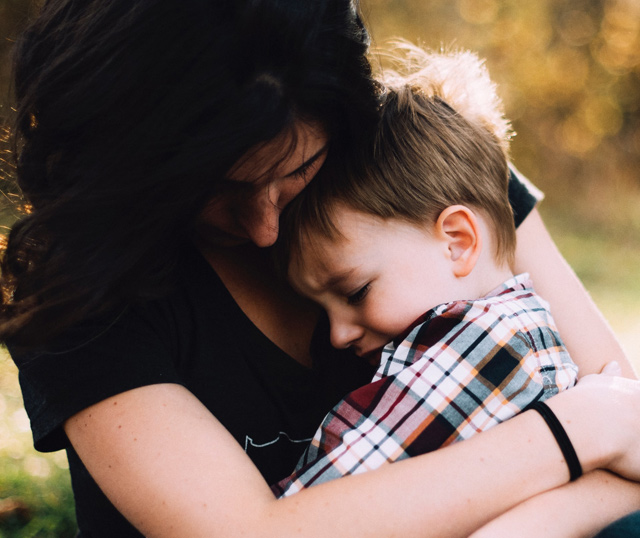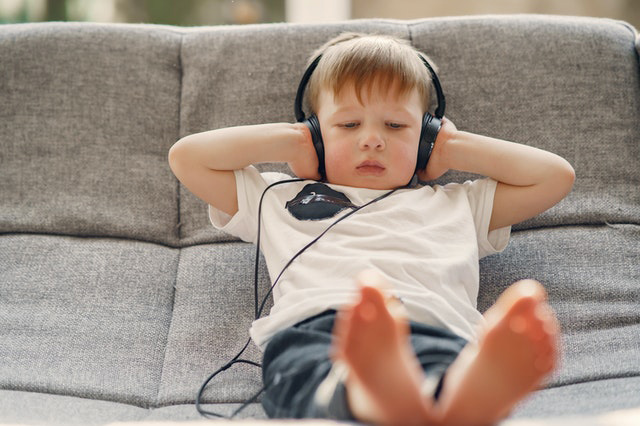Autism and Sound Control
Most people take for granted the large amount of sensory information our bodies are subjected to everyday. Our brains and nervous systems work to filter out much of this information so we can focus on our daily tasks. For example, when students sit in a classroom and are listening to their teacher explain a math problem, many children can ignore the sound of the hot air being forced through the ventilation system, the infrequent flicker of the overhead fluorescent lighting and the sound of traffic outside. While their brains are still aware of that sensory information, the students have intuitively learned how to ignore it, accept it as part of the non-threatening background environment and focus on the words and actions of their teacher.
By contrast, the brains and nervous systems of people with autism are more likely to react to sensory information in ways that cause great challenges. This article examines a few ways in which sound, in particular, can have an effect on people with autism and how some soundproofing techniques can provide acoustic relief.
Hyper-sensitivity to sound
In contrast to most people, being hyper-sensitive to sound can mean being aware of all the surrounding sounds that are happening at the same time. The brain also interprets each sound as having the same importance, making it difficult to concentrate on any one particular sound. So when someone is speaking, the sounds of the ventilation system or the sounds from another room compete to make concentrating on the conversation difficult. It's like trying to have a conversation with multiple people at the same time; your brain can't keep up. Imagine how it would feel if this was your reality all the time. Taking in too much auditory information could cause sensory overload.
There are also some other conditions that can affect people with autism:
Hyperacusis: The brain confuses or exaggerates certain sound vibrations, perceiving sounds more loudly and often painfully, even though other people are not bothered by the same sound. This condition can also lead to tinnitus, a ringing sensation in the ear, as well as ear pain, depression, anxiety and difficulty communicating with other people. Some people can develop Phonophobia, the fear of being exposed to these sounds in the present and future. To avoid these sounds, people with this condition tend to further isolate themselves.
Auditory Recruitment: People with hearing loss can experience this situation. Some hairs in the ear aren’t capable of detecting sound vibration due to damage, age or other conditions. The brain activates or recruits adjacent healthy hairs to boost hearing ability. The result is a sudden perception of sound as the brain catches up with the boosted signal. Because the sound ramps up so quickly and loudly, it can startle the person, causing ear pain and anxiety.
Misophonia: This is an immediate, unconscious, emotional reaction to specific sounds. The brain misinterprets certain selective sounds that trigger the fight or flight response in that individual. For example, this could be triggered by the sounds made by a one specific person chewing food but not by other people doing the same thing.
Sensitivity to certain sounds and frequencies: Another situation of being hyper-sensitive is when unexpected sounds coming from inside or outside the home cause anxiety. These could be loud like a gas-powered leaf blower or a particular pitch, like a siren, or simply a door slamming shut. Sounds above 70 decibels are particularly painful. (For reference, 70 decibels is considered equivalent to the sound of a washing machine, or room with a few people talking at regular volume.)
Reactions: The average person may show dislike for certain unpleasant or loud noises but is generally unaffected by them. (ie: screeching brakes or the pop of fireworks). Other sounds can be ignored (multiple, loud voices in a crowd). These same noises cause much stronger reactions and even pain in people with autism because they perceive sensory information much more keenly. Some people with autism will cover their ears, attempt to move away from the loud stimuli—possibly putting themselves in a harmful location without realizing it, shout or get aggressive. Sometimes, reactions include self-harm, like banging their head against the wall.
Solutions:
While we can't control every sound in the world, we can create safe and predictable spaces within our own homes. These spaces are useful tools that allow a person with autism to have a sense of control and feel less overwhelmed. They can use the safety of their room when needed but must still acclimate themselves to life’s busy and noisy world, a little at a time.
Current literature about providing care for people with autism suggests that complete avoidance of frightening stimuli is not a good solution, but neither is exposing an autistic person to constant sensory information. For example, if you are afraid of spiders, jumping into a spider-infested pit won’t cure your fear and neither will running away from every little spider you see. You have to slowly acclimate yourself to seeing spiders and learn how to control your fear over time. Similarly, the literature does not recommend building dependence on noise-cancelling headphones or ear-plugs. The goal is for the autistic person to slowly get used to different sounds—it is not useful or safe to always wear headphones/ear-plugs for all situations. That is why modifying only the bedroom or bedroom suite of an autistic person may be a good solution. One of the main modifications that can be done includes soundproofing techniques. While these solutions may not be cheap, they are a lot more affordable than out-of-home care at a special facility. In addition, setting up this safe space for an autistic person can give them more autonomy and lead to improved self-confidence.
Soundproofing techniques for an autistic person's bedroom:
The goal for soundproofing the room should be to reduce anxiety, uncertainty and overwhelming sensory information. Every autistic person is different in terms of what kind of sounds they are sensitive to, although many have it in common that they don’t like loud noises.
Depending on the needs of the autistic person, it may be required to make it difficult for loud noises to come into the room. Other times, it may be necessary to prevent specific noises from being heard, like a squeaky upstairs floor or the sound of certain appliances like the dishwasher or similar sounds from adjoining rooms. Soundproofing techniques can also be applied to other targeted areas of the house. For example, sound-absorbing pads can be placed under the washing machine or around the sources of undesirable sound.
Back in the bedroom, techniques to create extra air space between the walls can reduce sound transmission. Sound-deadening materials applied to the walls can also greatly reduce unwanted external noise. Strategically placed sound-absorbing panels on the walls and ceiling will help control errant sound waves and reduce unwanted echo. In some cases, non-invasive soundproofing techniques can be applied to reduce the need for demolishing walls and adding new drywall. The non-invasive materials are extremely effective, can be applied to a portion or an entire wall, can look attractive and allow for a much faster installation.
Regular, hollow-core doors can be replaced with solid-core doors to reduce break in and break out noise. Additionally, door sweeps and door seals can be added to further reduce outside noise.
Speakers can be placed on the ceiling or around the room and can be used for multiple purposes. One can be used to playback calming white-noise to make it easier to sleep. Another use can be to play other calming sounds or music that the autistic person finds comforting. This is controlled sensory information that some people with autism like.
Doing what we can:
There are many challenges in the journey to support our autistic family members. By removing triggers and sources of anxiety, we can make life a little bit easier for both caregivers and those with autism. Hopefully, modifying the autistic person’s room with soundproofing techniques can make it safer and more nurturing for the individual, while providing relief for the whole family. And, knowing that they have a safe place to return to, where they can calm down or recover from sensory overload, the autistic person can experience the world in short bursts, gaining confidence and learning how to handle the experiences of the outside world.
JAD Soundproofing has been in the soundproofing installation business for 20 years. Our highly experienced crew uses innovative materials and soundproofing techniques to customize a soundproofing solution for each job. We take the time to listen to our customers and provide options to maximize results based on their budget. We truly care about our customers and respect their space, making sure to leave it clean and tidy before we leave.
JAD Soundproofing would like to give back to the community by offering families with autistic members a discount on a soundproofing installation, including our new, non-invasive Acoustic Wall System. Please call JAD Soundproofing for more information.




Sources for this Article
- Autism, auditory processing disorder and your child’s hearing health
Debbie Clason, staff writer, Healthy Hearing, Last updated July 24, 2019
https://www.healthyhearing.com/report/52743-Autism-spectrum-disorder-and-your-child-s-hearing-health
- Sound sensitivity and autism: hyperacusis, phonophobia and tinnitus
Dr. Manuel Casanova
https://corticalchauvinism.com/2020/01/27/sound-sensitivity-and-autism-hyperacusis-phonophobia-and-tinnitus/
- Noise Control: 11 Tips for Helping your Child with Autism Deal with Noise
Karen Wang
https://www.friendshipcircle.org/blog/2014/05/06/noise-control-11-tips-for-helping-your-child-with-autism-deal-with-noise/
- Community Living British Columbia: Making Homes that Work (PDF)
A Resource Guide for Families Living with Autism Spectrum Disorder + Co-occurring Behaviors
George Braddock, Creative Housing Solutions LLC
John Rowell, Rowell Brokaw Architects, PC
https://www.communitylivingbc.ca/wp-content/uploads/2018/03/Making-Homes-That-Work-A-Resource-Guide.pdf
- Autism Speaks: Sensory Issues
https://www.autismspeaks.org/sensory-issues
- Job Accommodation Network: Sensory Processing Disorder (SPD)
Melanie Whetzel, M.A., CBIS, Lead Consultant – Cognitive/Neurological Team
https://askjan.org/articles/Sensory-Processing-Disorder.cfm
- What Do We Know about Noise Sensitivity in Autism?
Marina Sarris, Interactive Autism Network at Kennedy Krieger Institute
https://iancommunity.org/ssc/noise-sensitivity-autism